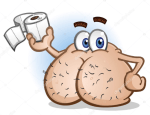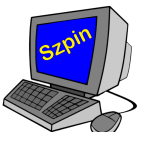Get the most out of home blood pressure monitoring
Checking your blood pressure at home is an important part of managing high blood pressure. Find out how to use home monitors accurately.

Checking your blood pressure at home is an important part of managing high blood pressure (hypertension).
Source: By Mayo Clinic Staff
The American Heart Association (AHA) and other organizations recommend that anyone with high blood pressure monitor his or her blood pressure at home. Home monitoring can help you keep tabs on your blood pressure in a familiar setting, make certain your medication is working, and alert you and your doctor to potential health complications.
Blood pressure monitors are available widely and without a prescription, so home monitoring is an easy step toward improving your condition. Before you start, it’s important to know the right technique and to find a good home blood pressure monitor.
Why do I need to monitor my blood pressure at home?
Monitoring your blood pressure at home can:
- Help with early diagnosis. Self-monitoring can help your doctor diagnose high blood pressure earlier than if you have only occasional blood pressure readings in a medical office. Home monitoring is especially important if you have elevated blood pressure or another condition that could contribute to high blood pressure, such as diabetes or kidney problems.
- Help track your treatment. The only way to know whether your lifestyle changes or medications are working is to check your blood pressure regularly. Monitoring blood pressure changes at home can help you and your doctor make decisions about your treatment, such as adjusting dosages or changing medications.
- Encourage better control. Self-monitoring can give you a stronger sense of responsibility for your health. You may feel even more motivated to control your blood pressure with an improved diet, physical activity and proper medication use.
- Cut your health care costs. Self-monitoring might decrease your number of visits to your doctor or clinic.
- Check if your blood pressure differs outside the doctor’s office. Some people experience spikes in blood pressure due to anxiety associated with seeing a doctor (white coat hypertension). Other people have normal blood pressure at a clinic but elevated pressure elsewhere (masked hypertension). Monitoring blood pressure at home can help determine if you have true high blood pressure.
Not everyone can track blood pressure at home. If you have an irregular heartbeat, home blood pressure monitors might not give you an accurate reading.
Types of home monitors
Most pharmacies, medical supply stores and some websites sell home blood pressure monitors. An automatic or electronic device is recommended. Discuss the choices with your doctor so that you pick the monitor that’s best for your situation.
Monitors generally have the same basic parts:
- Inflatable cuff. The cuff’s inner layer fills with air and squeezes your arm. The cuff’s outer layer has a fastener to hold the cuff in place. Heart rate and blood flow are automatically calculated by measuring the changes in the motion of your artery as the blood flows through while the cuff deflates.
- Gauge for readouts. Some blood pressure monitors can take multiple readings and report the averages.
Digital monitors that are fitted on the upper arm are generally the most accurate.
If you can’t find a cuff big enough for your upper arm or if you find blood pressure measurements painful, ask your doctor about fitting a cuff to your lower arm or wrist. These types of cuffs can be difficult to use correctly. Ask your doctor if they might be options for you and how they should be used.
Devices that measure your blood pressure at your wrist or finger aren’t recommended by the American Heart Association.
Public blood pressure machines
Public blood pressure machines, such as those found in pharmacies, may provide helpful information about your blood pressure, but they may have some limitations. The accuracy of these machines depends on several factors, such as a correct cuff size and proper use of the machines. Ask your doctor for advice on using public blood pressure machines.
Features to consider
When choosing a blood pressure monitor, consider:
- Cuff size. Having a properly fitting cuff is the most important factor to consider because poorly fitting cuffs will not give accurate blood pressure measurements. Ask your doctor or nurse what cuff size you need.
- Display. The display that shows your blood pressure measurement should be clear and easy to read.
- Cost. Prices vary. Ask your health insurance provider if your policy covers the cost of a home blood pressure monitor.
Device accuracy
Before buying a blood pressure monitor, check with your doctor to be sure the monitor has been validated — meaning its readings are accurate and repeatable. Once a year, check the accuracy of your monitor by bringing it to your doctor’s office and comparing your monitor’s readings with those taken by the doctor.
Tips for accurate use
No matter what type of home blood pressure monitor you choose, proper use requires training and practice. Take the device to your doctor or nurse to make sure the one you’ve chosen is the best fit for you, and learn how to use the monitor correctly.

To help ensure accurate blood pressure monitoring at home:
- Check your device’s accuracy. Before using a monitor for the first time, have your doctor check its accuracy against the office model. Also have your doctor watch you use the device to see if you’re doing it properly. If you drop the device or damage it, have it checked before using it again.
- Measure your blood pressure twice daily. The first measurement should be in the morning before eating or taking any medications, and the second in the evening. Each time you measure, take two or three readings to make sure your results are accurate. Your doctor might recommend taking your blood pressure at the same times each day.
- Don’t measure your blood pressure right after you wake up. You can prepare for the day, but don’t eat breakfast or take medications before measuring your blood pressure. If you exercise after waking, take your blood pressure before exercising.
- Avoid food, caffeine, tobacco and alcohol for 30 minutes before taking a measurement. Also, go to the toilet first. A full bladder can increase blood pressure slightly.
- Sit quietly before and during monitoring. When you’re ready to take your blood pressure, sit for five minutes in a comfortable position with your legs and ankles uncrossed and your back supported against a chair. Try to be calm and not think about stressful things. Don’t talk while taking your blood pressure.
- Make sure your arm is positioned properly. Always use the same arm when taking your blood pressure. Rest your arm, raised to the level of your heart, on a table, desk or chair arm. You might need to place a pillow or cushion under your arm to elevate it high enough.
- Place the cuff on bare skin, not over clothing. Rolling up a sleeve until it tightens around your arm can result in an inaccurate reading, so you may need to slip your arm out of the sleeve.
- Take a repeat reading. Wait for one to three minutes after the first reading, and then take another to check accuracy. If your monitor doesn’t automatically log blood pressure readings or heart rates, write them down.
Blood pressure varies throughout the day, and readings are often a little higher in the morning. Also, your blood pressure might be slightly lower at home than in a medical office, typically by about five points.
Contact your doctor if you have any unusual or persistent increases in your blood pressure. Ask your doctor what reading should prompt an immediate call to the medical office.
Tracking your blood pressure readings
Some people record their blood pressure readings by hand.
If you have an electronic personal health record, you might choose to record your information using a computer or mobile device. This gives you the option of sharing your readings with your health care providers and family members. Some blood pressure monitors upload this data automatically.
Long-term benefits
If your blood pressure is well-controlled, check with your doctor about how often you need to check it. Your doctor may suggest checking it daily or less often. If you’re just starting home monitoring to evaluate if you have high blood pressure or if you’re making any changes in your medications or other treatments, your doctor may recommend you check your blood pressure starting two weeks after treatment changes and a week before your next appointment.
Home blood pressure monitoring is not a substitute for visits to your doctor, and home blood pressure monitors may have some limitations. Even if you get normal readings, don’t stop or change your medications or alter your diet without talking to your doctor first. However, if continued home monitoring shows your blood pressure is under control, you might be able to make fewer appointments with your doctor.
Monitoring your blood pressure at home doesn’t have to be complicated or inconvenient. In the long run, you might risk fewer complications related to high blood pressure and enjoy a healthier life.









